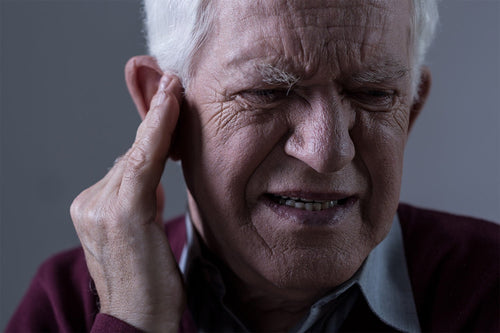One of the largest threats to your ability to hear well into your future is exposure to loud noises. Noise over 85 dB in loudness is capable of causing hearing damage over time. Additionally, certain activities and occupations may require you to be in loud environments for long enough that it may be able to affect your hearing acuity.
When it comes to hearing protection, there is more than one approach that can be effective. Depending on what you are doing and your environment, there may be an option that best suits your needs.
Below is a closer look at the different options when it comes to hearing protection, how they work, as well as their benefits. Understanding what is available out there can allow you to make the best decision for your specific needs and allow you to protect your ears from unnecessary noise-induced wear and tear.
How Can Noise Damage the Ear?

The ears are incredibly well adapted to hearing sounds but only at a frequency below its loudness threshold. Sounds like conversations, birds chirping in the distance, and most everyday sounds tend to fall within this range. When sound exceeds the loudness threshold of 85 dB, you can still hear it fine, but over time, it could come at the cost of your hearing and ability to hear quieter sounds.
Below is a closer look at how sound is able to cause damage to your ears and the type of hearing loss that can come as a result of loud sounds. Understanding how noise causes damage to your ears can help you to understand why it is so essential to protect them when loud sounds are around.
How Does Hearing Work?
Hearing is a complex function of humans. The complexity is what allows you to have such a high dynamic range of perceivable sounds. Your ability to hear starts off with the shape of the outer ear and ear canal.
When a sound hits the outer ear, it is funneled into the ear canal, and the ear canal brings the sound wave to the eardrum. The eardrum vibrates in response to the sound waves hitting it. This vibration is translated to the inner ear bones of the ear, where they conduct the vibrations to the inner ear structure known as the cochlea.
When the cochlea vibrates, it converts this physical stimulus into a neural signal that is then sent to the auditory center of the brain, where it is then perceived as sound.
Loud Noise and Sensory Hairs
The first way that loud sound levels can damage your hearing is by impacting a part of the cochlea known as the sensory hairs. As described previously, the cochlea is responsible for converting vibrational energy into a neural impulse. This is achieved through the help of highly specific sensory hairs.
The cochlea is a hollow structure containing hundreds of sensory hairs. When the middle ear bones introduce a sound to the cochlea, a wave is sent through the cochlea at a frequency and intensity that matches the sound emitted.
Each sensory hair is tuned into a specific frequency of sound. When that frequency is introduced to the cochlea, the corresponding hair bends and causes a neural signal to be sent to the brain for that specific tone.
Where the loudness, or intensity, comes to play is that it could potentially damage the delicate sensory hairs of the inner ear. Listening to music too loud, being exposed to loud factory noises, or even being next to a motorcycle for too long essentially wears out the hairs, which reduces their sensitivity.
This is the fundamental reasoning behind sensorineural hearing loss, which is typically a lifelong type of hearing loss since there is not a realistic way of healing the hairs back to what they once were.
Loud Noise and the Eardrum
Another way that loud sounds can affect your hearing is the eardrum. The eardrum is the thin tissue that separates the middle and outer ear, and its ability to act like a drum and vibrate is important to your ability to hear.
Unfortunately, due to the thinness of the tissue, it can be prone to tears when a loud enough of a sound is present. Sound is a type of vibrational energy; the way it travels through the air is by causing waves of pressure differences in the air. If a sound is loud enough, the pressure it brings can be too much and overcome the integrity of the eardrum and cause it to rupture.
A blown eardrum is never a good thing, but unlike sensorineural hearing loss, a blown eardrum is able to heal over time. When an eardrum perforation occurs, it can result in sudden hearing loss, vertigo, tinnitus, and ear pain. Over time if properly cared for, the eardrum will heal, and most individuals regain their ability to hear.
Ear Protection Options

The best way to prevent the noise-induced hearing loss described above is to have ear protection when you know that your environment may be loud. While it is impossible to protect your ear from every single loud noise, limiting your exposure whenever possible through hearing protection can allow you the ability to hear for many years to come.
Earmuffs
Earmuffs are one of the most recognized forms of hearing protection, and they consist of a device that closely resembles over-ear headphones in their construction. Earmuffs contain two cups that are placed over the outer ear with a headband that allows them to stay in place. The cups create a seal and have sound-deadening materials within them to shield the ears from loud noises in the environment.
The main benefits of earmuffs are that they tend to be one-size-fits-all, are easily equipped, and allow the ear canals to breathe to avoid ear wax buildup. A couple of negatives include their relatively large form factor, their weight, and that they can cause your ears to get sweaty.
Banded Earplugs
Banded earplugs are a form of earplugs that have a band that connects the two plugs. The band typically sits across the back of the head. The band can help to add lateral pressure to keep the earplugs in, but they also allow for them to be worn around your neck when not in use.
Banded earplugs are ideal for those that enjoy earplugs as a sound protective device but need to frequently take their hearing protection on or off. This could be helpful if you enjoy going to the drag strip to watch some quarter-mile runs. The vehicles can be really loud, and having a banded earplug can allow you to quickly don them and take them out between races.
Single-Use Foam Earplugs
One of the more common forms of hearing protection are single-use foam earplugs. They tend to be the most popular due to their low cost and almost universal fit. These types of earplugs are made of pliable foam that is rolled down and squished. Then, they are placed in the ears, where the foam expands and fills the ear canal space.
Single-use earplugs can be effective and inexpensive, but some people may find that the pressure exerted by the earplugs on the ear canal can result in soreness, discomfort, or irritation.
Solid Molded Earplugs
For individuals who enjoy in-ear earplugs but find them uncomfortable, custom-molded earplugs are a great option. These types of hearing aids are created by taking a mold of your ear, and a set of earplugs are made that exactly fit the dimensions of your ear.
These earplugs tend to be better tolerated for extended periods of time since they are not exerting any force on the ear canal and don’t have a squeezing sensation like hearing protection that contains headbands that clamp around the head.
Musicians Earplugs
One thing that many people don’t think about is the amount of noise that musicians are exposed to when playing music. There are a number of musicians that face noise-induced hearing conditions. These may consist of musical ear syndrome (also known as musical tinnitus) and hearing loss. While they could wear traditional earplugs, many ear protective devices muffle sounds which to a musician can be problematic and throw off their ability to play.
Musician earplugs are a special type of earplugs that aim to decrease the intensity of sounds without distorting the pitch and tone. These earplugs tend to resemble the custom solid molded, but they contain a special membrane that is able to achieve a specific sound profile.
Protecting Your Hearing
Hearing noise can be a beautiful thing, but it can also cause damage to your ears if it is too loud. By understanding the hearing protection options available, you can be better equipped to preserve your hearing for many years to come.
Sources
Preventing Noise-Induced Hearing Loss | CDC
The Study of Attenuation Levels and the Comfort of Earplugs | NCBI













